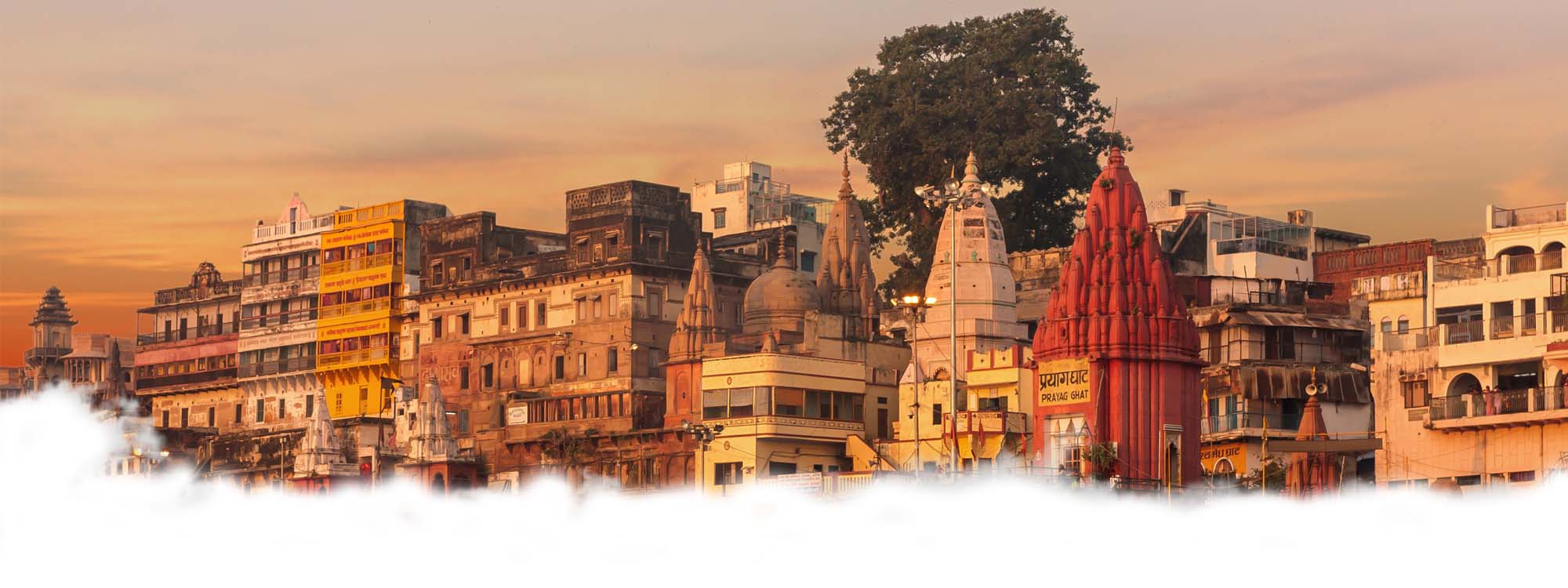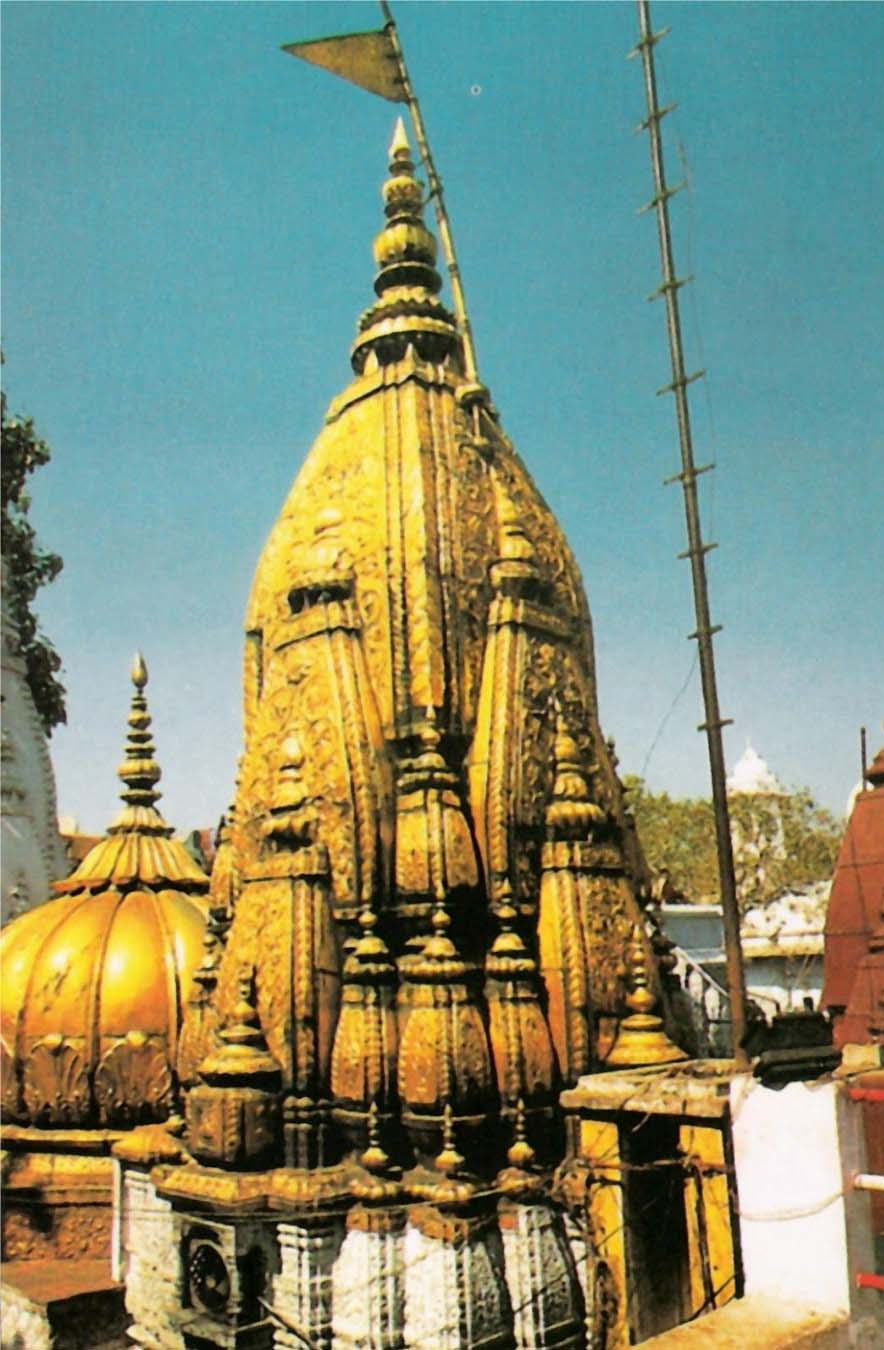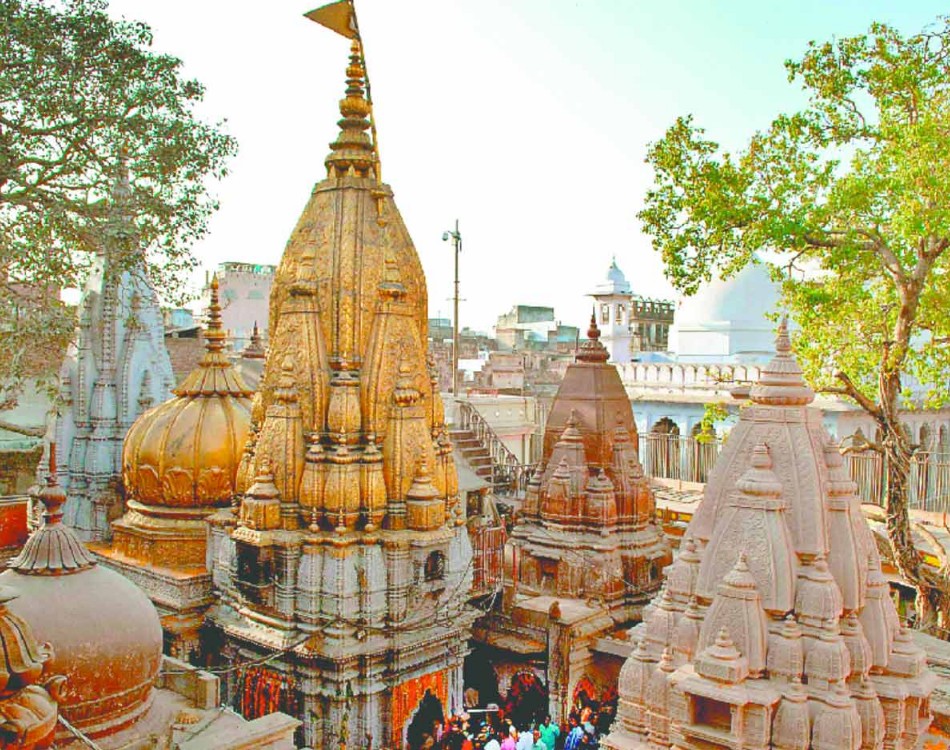
Kashi Vishwanath Temple
Kashi Vishwanath Temple is considered to be the most powerful Jyotirlinga. It stands tall on the western banks of the sacred river Ganga spread across a labyrinth of narrow galis, also known as the Viswanath Gali.
History Behind the Kashi Vishwanath Temple
The Kashi Viswanath Temple is located on the banks of the holy Ganges, and the Vishveshvara Jyotirlinga holds a special and unique significance in India’s spiritual history. It is a place where Hindus travel to attain Moksh or salvation. It is to Sanatana Dharma what the Vatican is to the Catholic Church, and the Mecca became to Islam. Especially a visit to the temple and then a bath in the river Ganga can help a devotee on a path to Moksha.
Many legends also record that a true devotee only achieves liberation from death and Sansar by the worshiping Shiva. It is believed that Shiva’s devotees after death are directly taken to his home on Mount Kailash and not to Yamaraj. Moreover, there is a popular belief that Shiva himself helps devotees attain salvation by blowing the mantra into their ears who die a natural death at the Kashi Vishwanath temple.
Kashi Viswanath Temple has many stories associated with the temple that dates back to thousands of years. One such story can be found in Shiv Purana, which details how Lord Shiva wanted to test Brahma (Lord of Creation) and Vishnu (Lord of Harmony) after they argued and questioned each other’s supremacy. This led to Lord Shiva splitting the three worlds into an endless pillar of light – the jyotirlinga, which forced both Vishnu and Brahma to split up in search of the source of light.
While Vishnu whole-heartedly accepted his defeat, Brahma lied to assert his supremacy with the flower of Kakuli as evidence. When Lord Shiva came to know Brahma’s deceit, he appeared as the second pillar of light and beheaded Brahma. Lord Shiva also cursed Brahma by saying that he won’t be worshipped anywhere while Vishnu would be worshipped eternally.

The jyotirlinga appeared to be the supreme partless reality, where Lord Shiva only appears partly and led to the establishment of the 12 jyotirlinga shrines all across India. Jyotirlingas are places where Shiva appeared as a fiery column of light among which Kashi Viswanath Temple is considered to be the most important place of worship.
Another story has it that long ago, all of it started when the Nirgun Shiva, created a world where Vishnu resided. Once, when Vishnu tilled his head, a gemstone fell, and it came to be known as Manikarnika. The entire Panch Koshi area of Manikarnika waters was made into Trident by Shiva, which resulted in the birth of Brahma from Vishnu’s navel. Brahma then created the mortal world. Shiva then removed the city of Kashi from His Trident and set it in this mortal world. But, in the time of Pralay, Shiva saved it by keeping it safe in his Trishul. That’s why Kashi is also known as Avi Mukta kshetra.
The divine city of Varanasi is regarded not only as auspicious for the Hindus, but also people from other religions. Buddha had come to Varanasi and preached his first sermon – ‘five’ near Varanasi. It is the hometown of Kabir in the 15th century, whereas in the 16th century, it was Goswami Tulsi Das who composed Hanuman Chalisa and RamachitraManasa.
Many other leading saints like Guru Nanak, Guru Govind Singh have also come to Kashi to preach their teachings. Saints like Adi Sankaracharya, Swami Vivekananda, Ramakrishna Paramhansa, Bamakhyapa, have also visited the holy site and have left with immense knowledge and learning.
Architectural Significance
The Kashi Vishwanath Temple is a collection of smaller shrines that are located in a small lane called the Vishwanatha Galli. The construction of the main temple is in the form of a quadrangle with shrines that are dedicated to other deities. These small temples are dedicated to Dhandapani, Kaalbhairav, Vishnu, Avimukteshwara, Sanishwara, Vinayaka, Virupaksh Gauri, and Virupaksha. The main Shivalinga of the temple is only 60 cm tall and 90 cm in circumference and is housed in a silver altar.
The temple structure looks like there is a Sabha Griha or Congregation Hall, leading to the inner Garbha Griha or Sanctum Sanctorum. The structure of the Mandir is composed of three parts; the first part is composed of a spire on the Mandir of Lord Vishwanath or Mahadeva. The second is a gold dome while the third is the gold spire placed atop Lord Vishwanath carrying a flag and a Trishul. The tower of Kashi Viswanath is almost 15.5 meters in height and is a sight to be seen to be believed. Around the temple, there is a cluster of five lings, which is also known as the Nilakantheshvar temple.

Interesting Facts About the Temple
- If you make a wish looking at the Golden Chatra, it is believed to come true.
- Another well-known fact is on the legend of the GyaanaVapi or well of wisdom. It is widely believed that when the news of Aurangzeb’s plans to destroy reached the temple, the head priest had jumped with Shiva’s idol in the well. This brave action was done in order to protect the much-revered idol from the destruction of the invasion. Now, the well still stands between the temple and the mosque.
- Devotees can book their visit and also get their prasad by post. Instead of standing in a queue for hours, devotees can book a token for themselves. This lets visitors get the prasad all at once with just one click sans any hassle of long queues.
The devotees visiting the Kashi Vishwanath Temple must adhere to the dress code if they wish to perform the Sparsh darshan. Men should wear Dhoti-Kurti (an Indian traditional attire), and women should adorn saree ( a long piece of fabric) as per the recent decision taken by the Kashi Vishwad Parishad. Devotees are also allowed to be dressed in western wear, but they can only worship the deity from outside the sanctum.
The evening Ganga Aarti is held to be a vital ritual. It is held on a grand scale every morning and evening on the banks of the holy Ganges at the Dashashwamedh Ghat. The entire Ghat is illuminated with lights and the devotees can feel the rise of spirituality in themselves. The magnificent ritual involves seven priests chanting the holy mantras with huge brass lamps lit with oil and the mantras reverberating all around the place.
Invasions of the Kashi Vishwanath Temple
The original Vishwanath temple was destroyed by Qutb-al-din Aibak’s army in 1194 CE, after defeating the Raja of Kannauj. A Gujarati merchant rebuilt the temple during the rule of Delhi’s Sultan Iltutmish in 1211–1266 CE. However, it was soon demolished during the rule of Sikandar Lodhi. Raja Man Singh and Raja Todar Mal again tried to rebuild the Temple during Mughal emperor Akbar’s rule.
However, under the reign of Emperor Aurangzeb, he destroyed the temple and further built the Gyanvapi Mosque in its place. Although there were multiple plans by many rulers to rebuild the Kashi Vishwanath temple it was in 1780 when the Queen of Indoor, Malhar Rao’s daughter-in-law Ahilyabai Holkar decided to construct the present temple adjacent to the mosque.
In 1833–1840 CE, the ghats, the boundary of Gyanvapi Well, and other nearby temples were constructed along with a 7-foot high stone statue of Nandi bull – a gift from Nepal’s king. While the Bhosales of Nagpur donated silver while in 1835, Maharaja Ranjit Singh donated 1 tonne of gold for plating the temple’s dome.
